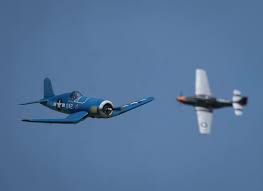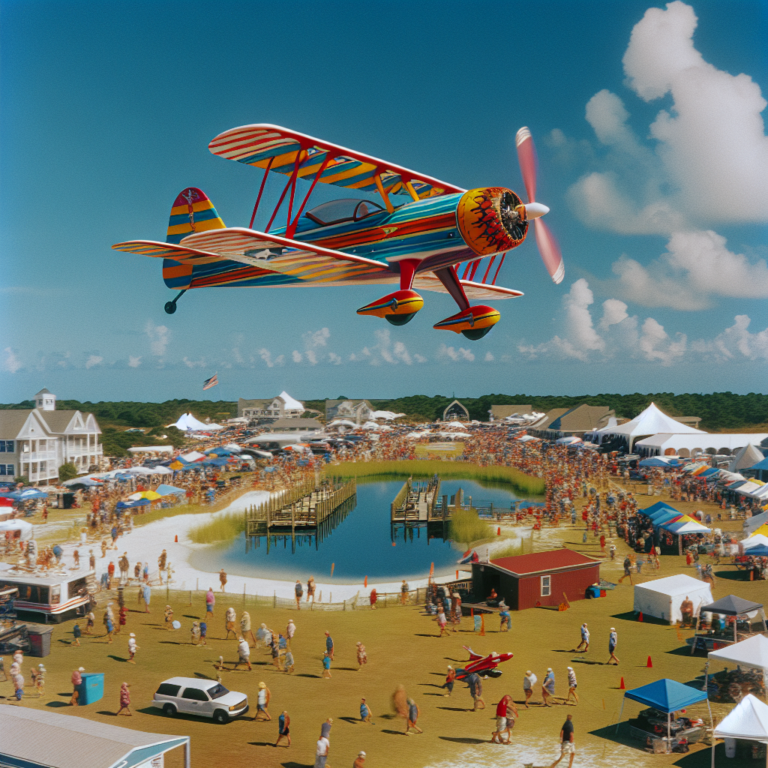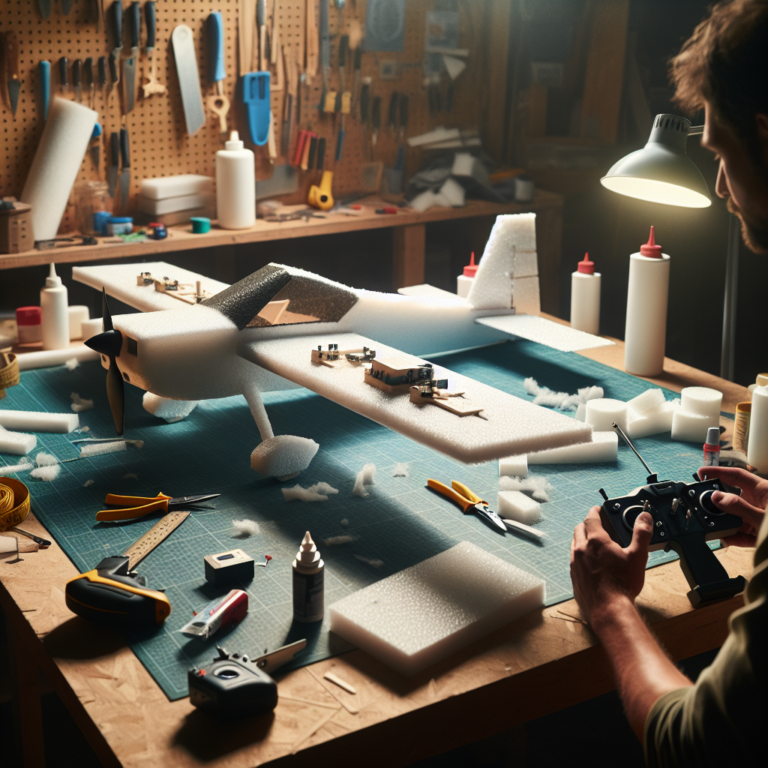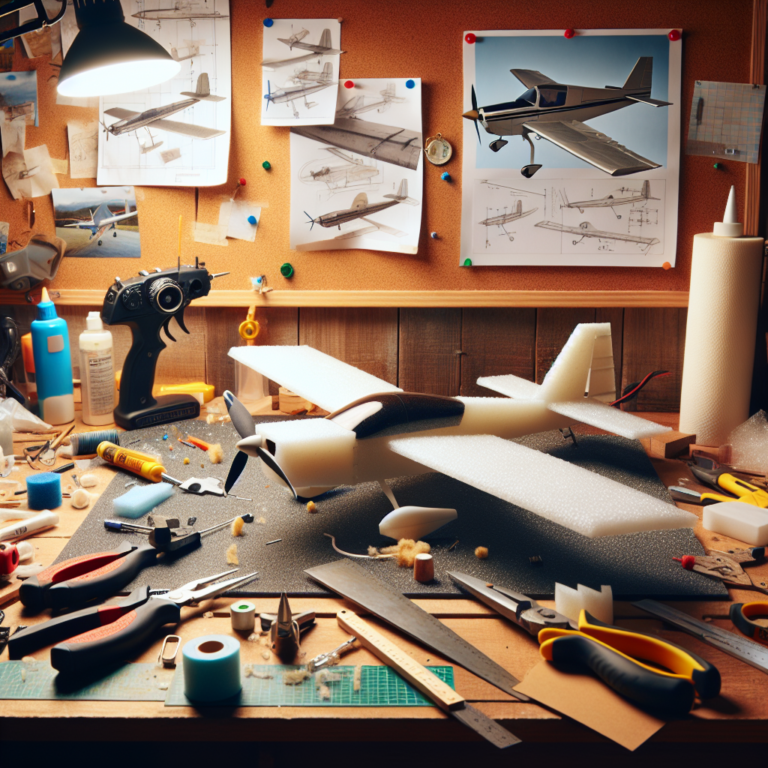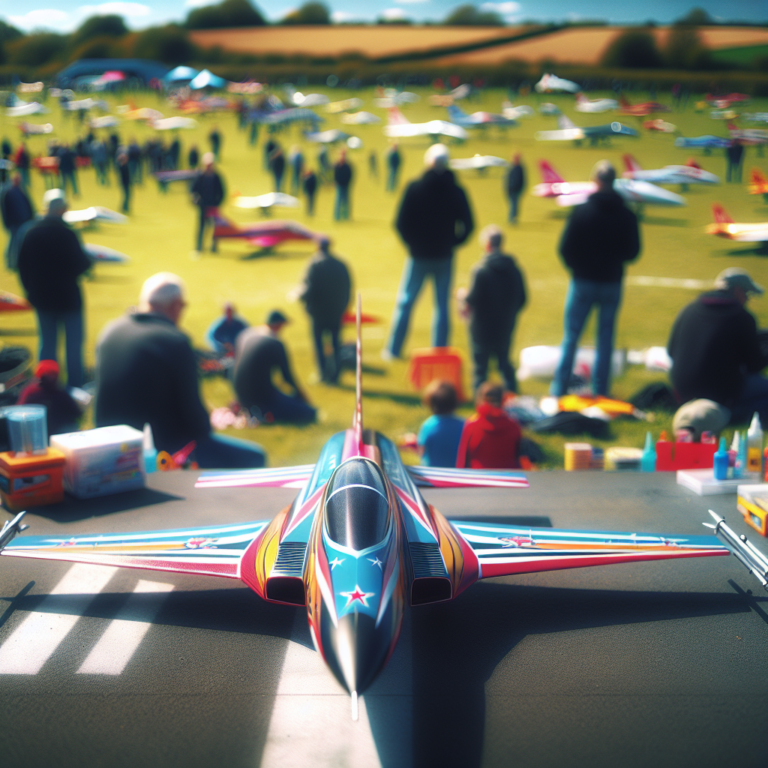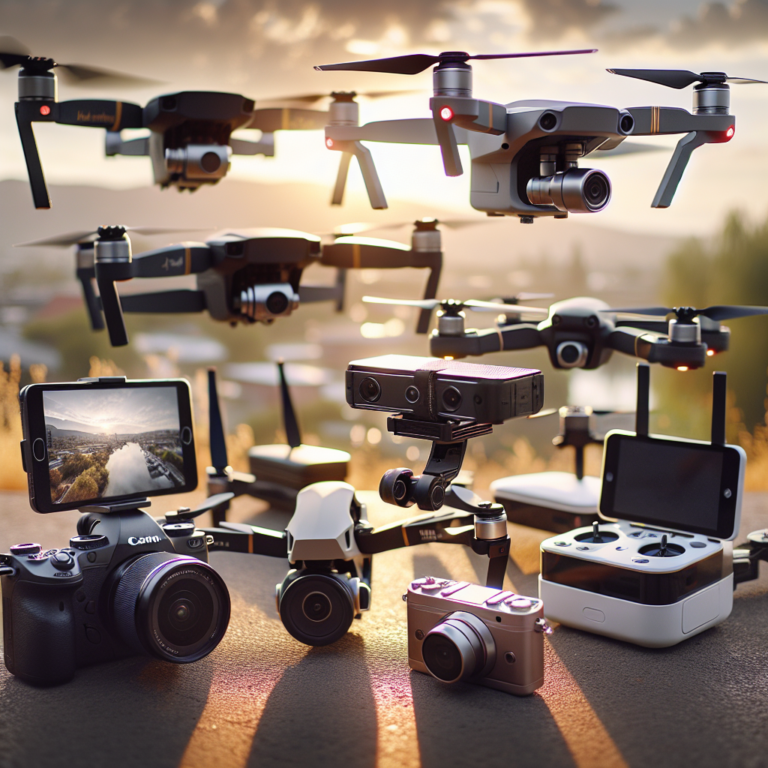Introduction to RC Planes
Brief History and Evolution of RC Planes
Ah, the thrill of seeing a remote-controlled plane soar through the skies! But do you know where it all began? Let’s take a quick dive into the fascinating history of RC planes.
It all started back in the early 20th century when aviation enthusiasts began experimenting with radio-controlled aircraft. These pioneers laid the foundation for what would become a beloved hobby and sport worldwide.

Over time, technological advancements in radio systems, materials, and aerodynamics have propelled RC planes to new heights – quite literally! Fast forward to today, and we have an incredible array of RC planes available, from beginner-friendly models to high-performance aerobatic machines.
The evolution of these miniature marvels is a testament to human ingenuity and passion for flight. Whether you’re into scale replicas of real aircraft or sleek racing drones, there’s a perfect RC plane out there waiting for you to take flight.
Benefits of Building Your Own RC Plane
Why build when you can buy ready-to-fly models? Well, crafting your own RC plane offers a host of benefits that go beyond just having a unique flying machine. Firstly, building an RC plane from scratch gives you a deeper understanding of how these marvels work – from aerodynamics to electronics.
It’s like unlocking the secrets of flight one glue stick at a time! Moreover, customizing your build allows you to tailor the performance and appearance to your liking.
Want neon lights on your wings? Go for it!
Additionally, building your own RC plane can be incredibly rewarding on a personal level. The sense of accomplishment when you see your creation take off into the wild blue yonder is simply unmatched.
Not to mention the satisfaction of troubleshooting any issues that arise during the build process – talk about hands-on problem-solving skills! So, whether you’re an aspiring engineer or just someone looking for a fun project to dive into, building an RC plane is sure to take your love for aviation to new heights.
Researching and selecting a suitable design plan
So you’ve decided to take on the exciting journey of building your own RC plane – fantastic choice! The first step in this thrilling adventure is to dive into the world of design plans. There are numerous resources available online where you can find a wide array of design options ranging from beginner-friendly models to complex and advanced builds.
Take your time exploring different designs, considering factors like your skill level, budget, and flying preferences. It’s crucial to select a plan that aligns with your goals and aspirations for the final product.
When researching design plans, pay attention to details such as wing type (high-wing vs. low-wing), fuselage shape, and overall dimensions. Each component plays a vital role in how your RC plane will perform in the air.
Consider browsing through forums or watching YouTube videos where experienced hobbyists share their insights on various designs. Don’t hesitate to ask questions or seek recommendations from the community – their feedback can be invaluable in guiding your decision-making process.
Gathering necessary materials and tools
With a design plan in hand, it’s time to roll up your sleeves and start gathering all the materials and tools you’ll need for this exciting project. The key to a successful build lies in having the right supplies at your disposal from the get-go. Your shopping list may include balsa wood or foam board for constructing the frame, electric motors, servos for controlling movements, a receiver for receiving signals from your transmitter, batteries for power – just to name a few essentials.
Make sure to double-check the design plan requirements against your inventory of materials and tools before making any purchases. This way, you can avoid any last-minute surprises or delays during the construction phase.
Additionally, invest in quality tools such as hobby knives, sandpaper, glue suitable for model aircraft construction, and wire cutters to ensure precision and efficiency throughout the building process. Remember: having all necessary items within reach will not only streamline your workflow but also enhance the overall experience of crafting your very own RC plane.
Crafting the Foundation: Cutting and Shaping
As you embark on the thrilling journey of building your own RC plane, one of the initial steps is cutting and shaping the vital components that form its structure. The fuselage, wings, and tail sections are the backbone of your aircraft, determining its aerodynamics and stability in flight.
When cutting these parts, precision is key. Use a sharp hobby knife or a specialized cutting tool to ensure clean edges and accurate dimensions.
The fuselage should be crafted with care, considering factors like weight distribution and space for electronic components. The wings need to be shaped symmetrically to maintain balance during flight, while the tail section plays a crucial role in controlling pitch and stability.
Joining Forces: Assembling with Glue or Epoxy
Once you have meticulously cut and shaped the individual sections of your RC plane, it’s time to bring them together in harmony through assembly. This step involves using glue or epoxy as the bonding agents that will securely unite the various parts into a cohesive whole. Choose a high-quality adhesive suitable for bonding materials like balsa wood or foam commonly used in RC plane construction.

Apply the glue sparingly but evenly along the joining edges to prevent excess seepage that could add unnecessary weight or compromise structural integrity. Take your time aligning each piece accurately before allowing the adhesive to set fully.
Remember that patience is key during this phase; allow ample time for the glue or epoxy to cure completely before moving on to further construction steps. A well-assembled frame is not just about strength but also about ensuring smooth airflow over the aircraft’s surfaces for optimal performance in flight.
Installing Electronics
Selecting the Right Components
Ah, the heart and soul of your RC plane – the electronics! When it comes to selecting the motor, servos, receiver, and battery for your creation, you want to ensure you’re choosing high-quality components that suit your plane’s size and intended use.
Consider factors like power output, weight, and compatibility with your chosen design plan. A brushless motor is often preferred for its efficiency and power delivery, while digital servos offer precise control over your plane’s movements.
Don’t forget about the receiver – opt for a reliable one with a good range to maintain seamless communication with your remote controller. And last but not least, pick a battery that provides enough juice to keep your plane soaring through the skies.
Wiring Wizardry
Now comes the fun part – wiring up all those electronic goodies! It’s like connecting the dots in a high-stakes puzzle game.
Make sure you have a clear understanding of each component’s function and how they need to be interconnected for proper functionality. Follow the manufacturer’s instructions closely and double-check your connections to avoid any mishaps during flight.
Securely fasten wires using zip ties or heat shrink tubing to prevent tangling or interference while in motion. Take your time with this step; a well-wired RC plane is essential for smooth operation and enjoyable flying experiences.
Powering Up for Success
As you piece together the intricate electronic puzzle of your RC plane, remember that proper wiring is key to unlocking its full potential. Test each component individually before connecting them all together to troubleshoot any issues early on. Ensure that all connections are secure and insulated to prevent short circuits or electrical malfunctions mid-flight – no one wants their masterpiece going haywire in the sky!
Once everything is wired up correctly, give it a test run on the ground to make sure all systems are ago before taking off into the wild blue yonder. With careful attention to detail and some electrical know-how, you’ll have your RC plane powered up and ready for action in no time!
Adding Control Surfaces
Attaching Control Horns for Maneuverability
When it comes to building your own RC plane, ensuring proper control and maneuverability is crucial. This is where control horns come into play. Control horns are small, plastic or metal pieces that attach to the control surfaces of your plane, such as the wings and tail.
These control horns act as a linkage between the servo motors and the surfaces they control, allowing you to steer and maneuver your RC plane effectively. To attach control horns to the wings and tail of your RC plane, you’ll first need to carefully mark the precise location where they will be mounted.

Using a sharp hobby knife or drill, create small pilot holes for the screws that will secure the control horns in place. Be sure to align the control horns properly with the direction of movement you want from each surface.
Once in position, secure the control horns tightly using screws or bolts provided with your kit. Double-check that they are firmly attached before moving on to connecting them to the servos.
Connecting Control Surfaces to Servos for Remote Operation
Now that you have successfully attached the control horns to your RC plane’s wings and tail, it’s time to connect them to the servo motors for remote operation. Servos are small devices responsible for moving the control surfaces based on signals received from your transmitter/controller.
To connect them effectively, start by identifying which servo corresponds to each control surface – typically labeled in your design plan or manual. Using suitable linkages (such as pushrods or cables), attach one end securely to each control horn and then connect the other end to its respective servo arm.
Ensure that there is minimal slack in these linkages so that movements from servos are translated accurately into desired actions on your RC plane’s surfaces. It’s important also not to overtighten these connections as it may hinder smooth movement during flight operations.
In testing this setup, power on your transmitter/controller along with all electronic components of your RC plane; carefully observe how each servo moves when you input commands through controls. Make any necessary adjustments by repositioning linkages if certain controls seem off-center or reversed compared to how they should be working according to their intended functions.
Ensuring Safe Skies: Conducting Pre-Flight Checks
Before sending your homemade RC plane soaring into the skies, it’s crucial to conduct thorough pre-flight checks to ensure a safe and successful flight. Start by carefully inspecting all components of your aircraft, checking for any loose connections, damages, or abnormalities.
Verify that the control surfaces move freely and in the correct direction when you manipulate the controls on your transmitter. Additionally, check the battery to ensure it is fully charged and securely attached.
Next, assess the flying conditions at your chosen location. Make sure there are no obstacles or hazards in the flight path that could interfere with your aircraft.
Check for any potential radio interference that could disrupt communication between your transmitter and receiver. Double-check that you have all necessary tools and spare parts on hand in case any adjustments or repairs are needed before takeoff.
Fine-Tuning for Flawless Flight: Optimizing Controls
Once you’ve completed your pre-flight checks and everything is set for takeoff, it’s time to fine-tune the controls of your RC plane for optimal performance in the air. Begin by adjusting the control surface throws to achieve the desired level of responsiveness without being too sensitive or sluggish. Test each control (ailerons, elevator, rudder) individually to ensure they are moving correctly and responding accurately to your transmitter inputs.
If you notice any imbalances or inconsistencies during ground testing, make incremental adjustments to trim tabs or servo arms until the control surfaces are aligned properly. Use a combination of manual adjustments and programming settings on your transmitter to calibrate endpoints and center positions for precise control during flight.

Take your time with these adjustments as they can significantly impact how well your RC plane handles in mid-air maneuvers. Remember that fine-tuning controls is an ongoing process – even experienced flyers continuously adjust their settings based on flying conditions and personal preferences.
Practice flying in open areas with plenty of space to test different maneuvers and settings before attempting more advanced flights. By mastering the art of control optimization, you’ll be able to navigate the skies with confidence and precision in every flight session.
Painting and Finishing Touches
Applying Paint or Decals for a Personalized Touch
Now comes the fun part – adding your personal flair to your RC plane! Whether you’re a fan of bold colors, sleek designs, or intricate patterns, painting your RC plane is where you can truly make it your own.
Start by sanding down any rough edges on the frame to ensure a smooth surface for painting. Then, choose high-quality model paint that is compatible with the materials of your plane.
Using thin layers, apply the paint evenly with a brush or spray gun for a professional finish. If you’re feeling creative, consider using decals or stickers to add extra detail and personality to your aircraft.
To achieve a flawless paint job, take your time and allow each layer to dry completely before applying the next one. This will prevent smudges or streaks and give you a vibrant, long-lasting finish.
Experiment with different color combinations and designs to showcase your style and make your RC plane stand out at the flying field. Remember, this is your chance to get creative and have fun with customizing your aircraft!
Adding Landing Gear or Other Accessories as Desired
Once you’ve painted your RC plane to perfection, it’s time to consider any additional accessories that can enhance its performance or appearance. One popular add-on is landing gear, which can help protect the underside of your plane during takeoff and landing.
You can choose from fixed landing gear for simplicity or retractable landing gear for a more streamlined look in flight. Make sure the landing gear is securely attached to the frame and balanced correctly for smooth landings.
Beyond landing gear, there are countless other accessories you can incorporate into your RC plane build. From LED lights for night flying to cameras for aerial photography, the possibilities are endless!
Just be mindful of adding too much weight that could affect the balance and flight dynamics of your aircraft. Select accessories that align with your flying goals and preferences while maintaining the overall integrity of your homemade RC plane.
Tips for Flying Your Homemade RC Plane Successfully
Find an Open, Clear Space
When it comes to taking your homemade RC plane for a spin, location is key. Look for a wide-open area, like a park or a field, where you won’t have to worry about obstacles or interference. Taking off and landing is much easier when you have plenty of space to maneuver.
Start Slow and Steady
Don’t rush into high-speed maneuvers right away. Start by getting comfortable with the basic controls and gradually increase the complexity of your flights as you gain confidence. Practice smooth takeoffs, gentle turns, and gradual climbs before attempting tricks or aerobatics.
Be Prepared for Mishaps
Even the most experienced pilots crash their planes from time to time. It’s all part of the learning process! Make sure to bring along some spare parts and tools for quick repairs on-site.
Embrace any setbacks as opportunities to improve your skills and make your next flight even better. Flying your homemade RC plane can be an incredibly rewarding experience that combines creativity, craftsmanship, and pure exhilaration.
By following these tips and taking the time to practice and refine your skills, you’ll soon be mastering the skies with confidence and finesse. Remember that every flight is a chance to learn something new and enjoy the thrill of seeing your creation take flight.
Resources for Further Learning and Customization
Online Communities and Forums
Joining online forums dedicated to RC plane enthusiasts can be a fantastic way to connect with fellow hobbyists, share tips and tricks, ask questions, and learn from others’ experiences. Websites like RCGroups.com or FliteTest’s community forum are great places to start building connections within the RC plane community.
Specialized Publications
Investing in books or magazines focused on RC airplane building and flying can provide valuable insights into advanced techniques, design principles, troubleshooting tips, and product reviews. Publications like Model Airplane News or Radio Control Model Flyer offer in-depth articles written by experts in the field.
Local Hobby Shops
Don’t underestimate the wealth of knowledge that can be found at your local hobby shop! Visit stores specializing in remote control hobbies where you can get personalized advice from experienced staff members on selecting equipment, troubleshooting issues with your build, or discovering new products that could enhance your flying experience.
